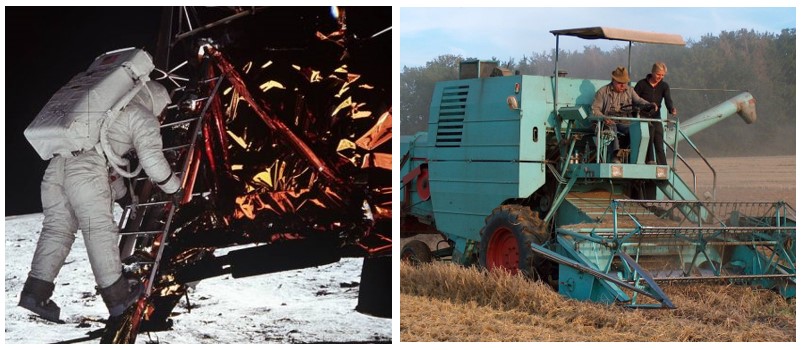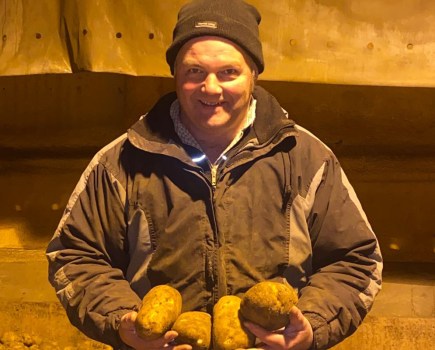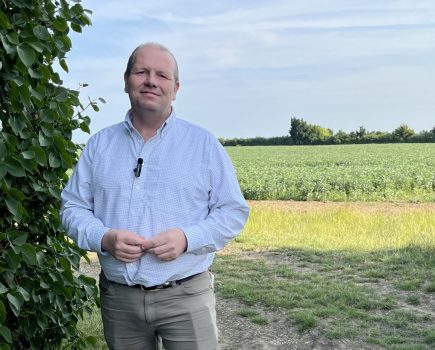 The 50-year celebrations of the moon landing caused a bit of fascination in the Smith household for both the younger element and those of us ancient enough to have watched it live on TV.
The 50-year celebrations of the moon landing caused a bit of fascination in the Smith household for both the younger element and those of us ancient enough to have watched it live on TV.
It’s sobering for those of us in that latter camp that we watched, in our front rooms, history being made. This eyewitness perspective we had on outer space I suppose makes us a bit of a pioneer generation. It’s not as if my grandparents could have watched the Titanic go down in the mid-Atlantic by channel hopping between Coronation Street and The Magic Roundabout. At the other end of this telescope it’s worth remembering this remarkable lunar feat has not been repeated since the 1970s so for the under 40s it’s a triumph of technology not witnessed by their generation.
But to temper this sense that I’ve become some sort of relic from recorded history along with the wind-up gramophone is the fact that one of the curiosities of the 1969 footage of the Apollo mission is that it all still seems very modern. The technology involved in putting men on the moon seems to have retained its ‘cutting-edge’ feel. Having said that I’m reliably told the average in-car sat nav of today has more computer power than the entire NASA computer systems that guided Apollo 11. That’s as maybe, but I still don’t really trust the sat nav in my truck to get me to Stevenage let alone to the Sea of Tranquillity.
As I wiled away the hours in the combine cab this harvest, the ’50-years on’ theme made me think about how the technology that drives our lives as farmers has changed over the last half century. In 1969 most combine harvesters didn’t even have cabs. The air-conditioning was the breeze on your face. It doesn’t seem possible that the combine drivers of the 1960s spent hours breathing in clouds of dust with their unprotected ears more or less pressed against the deafening roar of a 5-6000 cc diesel engine.
As a small boy I can remember enjoying the cabless Claas Matador experience sitting on Dad’s lap. Bizarrely I regarded it as a special treat rather than a health and safety nightmare. It kind of makes me grateful I’ve survived as long as I have, somehow exceeding the average life expectancy of a Victorian chimney sweep’s boy.
One remarkable thing the 1969 spacemen had was telecommunications whereby they could talk to Houston Control some 250,000 miles away. On a combine in 1969 you had trouble shouting loud enough to make yourself heard by the trailer driver ten yards away.
By great contrast today, in the confines of the modern combine cab you are in no way isolated from the wider world. Through our mobile phones, grain can be sold literally while it’s being harvested and that’s while checking the MATIF wheat futures on the iPad. For those blessed with 5G and automated steering there is the possibility of watching Bargain Hunt on BBC1 while bringing home the sheaves. I’m even tempted to look at emails and Twitter when combining but I’ve given that up as I realised all I achieved is doing two things incompetently, not to say dangerously.
One aspect of the 1969 Moon Landing I was particularly struck by was the fact Neil Armstrong switched from automatic pilot to manual when he realised his spacecraft was headed to land in a crater because the NASA computers were four miles out. It’s nice to think in a few years’ time the next generation of combine drivers will occasionally switch to manual so they can appreciate the skill of combine drivers of old. As for removing the cab, that would be nostalgia gone mad.
Guy Smith grows 500ha of combinable crops on the north east Essex coast. @EssexPeasant

Two images from 1969. One doesn’t seem that dated. As for the other…




